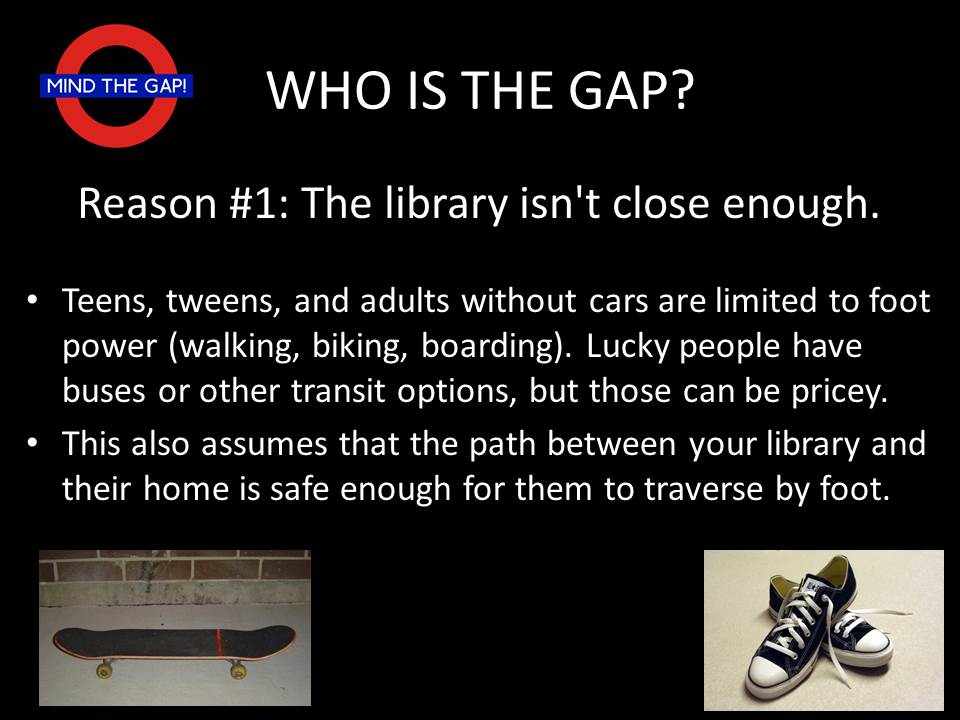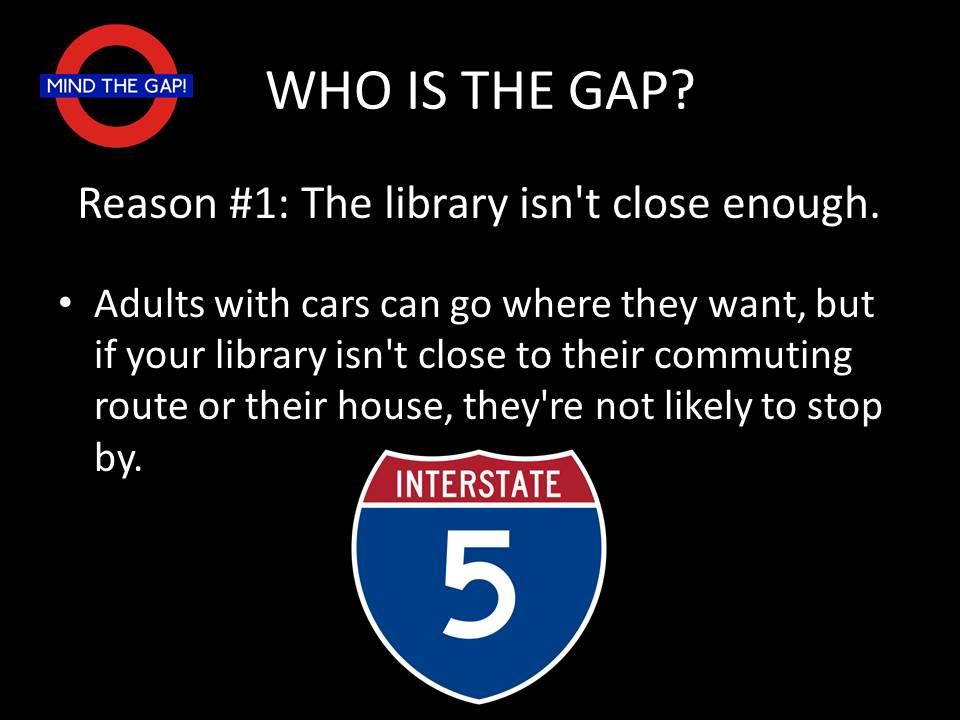
Lots of people don't come to the public library because it's not close to them. For a key demographic, teens and tweens (those ages that are old enough to be able to go places after school, but not necessarily able to afford transpot to go everywhere they want to) will have to have a public library that is somewhere within their ability to travel by foot, whether from school or from home. If the library is outside of their foot power zone, they'll be relying on parents, firends, older siblings, or anyone else they can bum a ride from to get to and from the library. This makes it difficult for them to get into the habit of being libary users at the times of their lives where teens and tweens need a place to hang out and to practice the skills of adulthood and self-discovery.

On the adult side, many adults traverse their commuting routes day in and day out, from home to work to errands to home. If the public library isn't in that loop, there's less likelihood that the adult population will stop by to the library, whether to bring their littles, to check out materials for the commute, or other interactions with the library. That's a big part of the Gap - the kinds of people who aren't able to make it to your library. Digital offerings is a partial solution, but it's not a complete one, unless you plan on having an extensive digital collection to keep them satisfied, and your process for getting digital materials is an easy one.